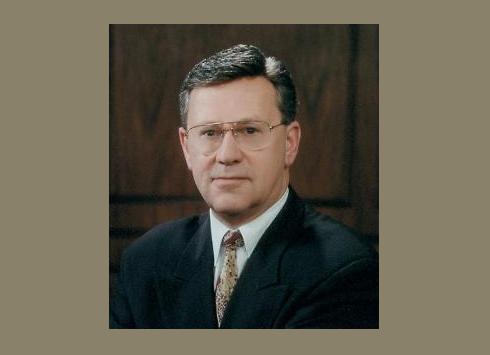Predicting ROI Before It Happens - Bill Harvey - MediaBizBlogger

We agree with our friend Irwin Gotlieb's observation that there are challenges in applying an ROI metric in the Upfront. ROI is inherently historical while the Upfront is all about buying into the future.
One would think that the only way to wield an ROI tool in the Upfront would be if you could quickly predict ROI for one set of programs versus another. I say 'quickly predict' because packages have to be evaluated soon or they are off the table when inventory is scarce. And with Leno and other forces taking points out of prime, this will be a low supply Upfront.
At any rate – however this Upfront breaks (and we are all endlessly fascinated with that question) – how can you predict ROI for one set of programs versus another?
TRA's work, along with other stellar singlesource work from Behaviorscan, Apollo, Mars Catalyst and many others, shows that TV advertising ROI is driven by three factors: creative execution, targeting, and program environment.
Media alone – targeting and program environment – has yielded average ROI increases of 20% to 60% when singlesource analytics are used to identify the right programs. This is according to data to be released by my co-presenter Laurent Laurignat of Mars Catalyst, part of the company that makes M&Ms and much else, on June 24 at the ARF AMS 4.0 conference (Millennium Hotel NYC).
His colleague Sebastien Lion, Global Chief Marketing Science Officer of Mars, Inc. will also be presenting there. Sebastien indicated that the creative plus media variables has lifted brand TV ROI from 70 cents to $2 in a short time.
Isn't this an exciting notion! It certainly heats our blood at TRA, because we always expected that the day would come when our data could prove singlesource works to increase ROI. We are delighted to have been scooped. This is an historic moment. A global advertiser is presenting evidence that singlesource works. TV ROI can actually be lifted.
So how is it done? How can you get back insight quickly enough to be relevant to the Upfront process? What do you use to predict ROI of TV shows as ad vehicles?
Creative is out of your hands if you are buying the Upfront. You are in the media silo. Everything has to be based on the media variable, which comes down to targeting and media environment.
There's a big difference between the two media variables in terms of utility at the moment. With program environment, the industry has a ways to go. Apollo already demonstrates that the same program genre can help one brand and hurt another. However that is both targeting and environment at work. TRA is working to separate out the two. But those findings are months into the future. The Upfront is any day now. What can be done for the present Upfront? Anything?
Yes. The targeting variable is ready to go. TRA has isolated a single targeting variable for CPG that works for every brand that we have analyzed so far. This variable is predictive of ROI in five out of five cases. Five different major brands in four different categories.
The variable, Heavy Swing Purchasers (HSP), amounts to heavy category purchasers who have bought your brand but not loyally in the past two years. It is a target TRA can identify program by program via set top box data linked to frequent shopper card data. You don't just want to reach that target, you want to cover all your targets, but if you point at that one, you have a degree of predictivity of ROI – it will go up.
Take the case of Food Brand D. Among its entire TV schedule, its average ROI was $1.28. But when just that subset of programs was separated out that skewed to the brand's HSPs, among that subset, the ROI was $1.64 -- a 28% increase.
That was one of the lowest increases across the five brands. For Beverage Brand B, the overall TV ROI was $0.35. But among programs skewed to the brand's HSPs, the ROI was $1.13, a 51% increase. (Not the highest increase of the five.)
We will be presenting all five cases along with a lot of other information at the ARF AMS on June 24. Hope you'll join us.
So the conclusion we draw is that instead of trying to apply ROI directly in the Upfront, simply add the HSP Index to the optimization. As we go on, we will be able to do even more.
Yesterday, Research World ran an illuminating article called "ROI: The Tools of the Trade" in which leading ROI practitioners around the world shared their views of marketing mix modeling and singlesource. In that article, ZenithOptimedia's Frank Harrison is quoted as saying with regard to ROI, "The trick is to work out how to predict most accurately the future, using data from the past, but if the weather men can do it then so can advertisers."
John Marinopoulos, MD of Australia's Strategic Intelligence Group, expresses a fundamental objection to marketing mix modeling (MMM) based on the low degree to which it meets his test of bringing new information into an organization. My partner and TRA Chairman/CEO Mark Lieberman in the article takes this one step further to point out MMM's inability to help lift the TV ROI. But today's MMM has proven itself as the only across-enterprise gauge of ROI, in which TV spend is a small piece, so obviously the future is going to see an integration of both tools rather than one totally replacing the other.
Bill Harvey has spent over 35 years leading the way in the area of media research with special emphasis on the New Media. Bill can be contacted at bill@traglobal.com.
Read all Bill’s MediaBizBlogger commentaries at Bill Harvey - MediaBizBlogger.


